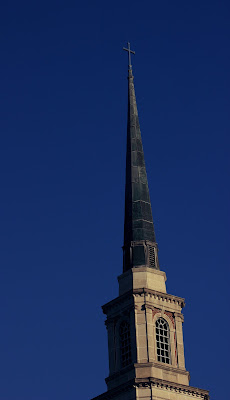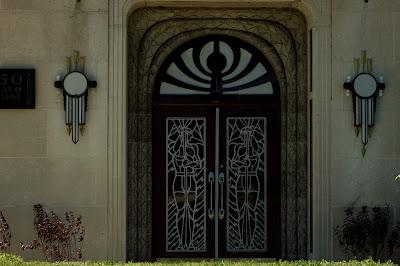After hearing my instructor's explanation of the Exposure Triangle, viewing some demonstration photographs in class, and applying the skills to my own picture taking sessions, here's my understanding of aperture, shutter speed and ISO, and cheat sheets (officiallondonphotographytours.co.uk) to summarize the information.
Aperture is how wide your lens opens in order to control the amount of light that comes into your camera. The term F-stop is used to measure the size of the lens opening. Here is where you can get turned around. The larger the F-stop number the smaller the opening. Yes, larger number = smaller lens opening. If you can get that concept stored in your memory you've halfway mastered this setting. This means when you are shooting at night you want to have a larger F-stop, and for shots outside on a bright sunny day you want to have a smaller F-stop.
Once you have learned how to adjust the F-stop to the lighting, you can then focus on the creative aspect of this setting which is called
depth of field. The depth of field is simply the amount of the scene that is in sharp focus. For example, when you take a close up shot you may want the object of the photograph to be in sharp focus and the background to be blurred. In contrast, with a landscape shot you may want the entire scene to be in focus. A smaller F-stop means you will have less in focus (smaller depth of field) and with a larger F-stop you will have more of the scene in focus (larger depth of field).
 |
1/100, f/7.1, 100 ISO
probably should have increased the ISO to improve the lighting |
I suggest you first focus on controlling the light that comes into your camera by adjusting the F-stop. Just remember a larger number for less light and a smaller number for more light. Then you can work on your creativity with depth of field.
Shutter speed is the quickness in which your lens closes to capture the image in your photograph and control the blurriness or sharpness of the picture. The shutter speed is measured in seconds and is displayed in the form of a fraction like 1/125 which means the lens closes in one - one twenty fifth of a second. The higher the bottom number the faster the lens closes. Most of the time you will use a shutter speed of 1/60 or higher. If you use a shutter speed lower then 1/60 you will want to use a tripod to prevent the photograph from capturing hand shakes when taking the picture.
Like aperture, the shutter speed has a creative effect to its application. Shutter speeds are also written as whole numbers like 30 which means the lens closes in thirty seconds. This slower speed can be used to capture the movement in a scene causing a blurry effect and producing a more creative photography.
 |
1/1000, f/4.5, 100 ISO
higher shutter speed to capture the flag without blurry effect from wind |
ISO in digital photography measures the sensitivity of the camera's image sensor to light, and is measured in whole numbers like 100, 200, 400 etc. Higher ISO settings are used in darker lighting. However, a higher ISO will result in more noise or grain appearing in a photograph. This effect can cause a creative aspect to the photograph or can produce a very poorly exposed picture.
 |
1/60, f/5.6, 400 ISO
higher ISO because of the darkness |
This is only the basics. Next, I must grasp how each of these elements interacts with the other to produce the best quality exposure.






















































